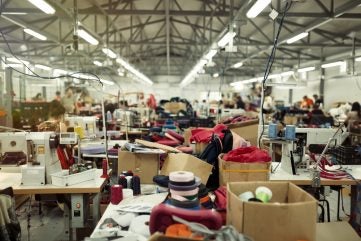
TIWW states that emerging norms and regulations are pushing towards a shift rooted in shared responsibility and environmental diligence in the garment industry.
TIWW launched in 2022, serves as an annual barometer of industry progress across three vital pillars of change: wages, purchasing practices, and greenhouse gas (GHG) emissions.
The organisation pushes for a transformative approach that addresses power imbalances, fosters more equitable sourcing dialogues and disrupts the previous trend of brands offloading responsibility onto manufacturers.
Andrew Martin, executive vice president at SAC echoed this and said: “This year’s Industry Dashboard highlights the critical need for a collaborative approach to solving complex issues, one that is built on open, constructive dialogue among all stakeholders—brands, manufacturers, governments, and civil society organisations—to find sustainable solutions.”
By prioritising those involved in the supply chain and sustainable practices, TIWW hopes the industry can drive meaningful change and create a more inclusive and person-centric environment.
Martin continued: “Inclusive collective action at scale is now imperative if we are to drive meaningful change to overcome both social and environmental challenges.”
Dr Hakan Karaosman, assistant professor at Cardiff University, chief scientist at FReSCH and chair at UCFR said: “Decarbonisation must happen across multi-tier supply chains, but context-specific action plans must be created with supplier consultation and representation. This is the most important antecedent to a fair, equitable and just transition.”
The recently published scores showcase both areas of improvement and stagnation and highlight the industry’s “fragmented efforts” with ongoing challenges in levelling the playing field and addressing labour rights violations and environmental concerns.
Wages
Collaborating with the WageIndicator Foundation, TIWW’s wage metric highlights the disparity between legal minimum wages and living wages in 28 garment sector manufacturing countries. The 2024 score of 49.5% reveals a widening gap of 1% between minimum wages and living wages since 2023.
Significant wage gap increased in:
- Columbia
- Honduras
- Türkiye
Countries with the widest gaps:
- China
- Egypt
- India
- Indonesia
Peter McAllister, executive director at ETI commented: “The Dashboard clearly shows the need for a greater effort to ensure real wages are increased and the cost shared along the value chain, which needs all involved in the sector to focus on. Due diligence legislation that aligns with the UNGPs brings a focus to this effort with clearer accountability for companies.”
Purchasing practices
The attention towards responsible purchasing practices has increased, particularly among brands associated with multi-stakeholder initiatives like Fair Wear, ETI, and SAC.
79.4% of suppliers are rating brands that they consider to be their preferred partners with the data being derived from the Better Buying Partnership Index, which is an annual survey that is available for all suppliers to rate their buyer’s purchasing practices.
The metric score has increased by 8 points since 2023, and currently stands at 48. This year, the number of ratings increased by 21% compared to the previous year, with 1,413 supplier ratings from 63 countries. The highest-rated brands performed well in areas such as being free of corruption and bribery, having good communication practices, and adhering to fair financial practices.
Alexander Kohnstamm, executive director at Fair Wear Foundation said: “Effective mechanisms for social dialogue between worker representatives and factory management, as well as responsible sourcing dialogue between manufacturers and brands, are fundamental for shared responsibility.”
TIWW states that the results may not completely reflect the difficulties faced by workers and the industry as a whole further participation from suppliers is necessary to accurately assess industry practices and address existing challenges.
Greenhouse gas emissions
Drawing data from various sources, including SAC, Wordly, Textile Exchange and Apparel Impact Institute, TIWW’s GHG emissions metric in the apparel sector was 0.879 Gt CO2e, equivalent to a 1% decrease in emissions compared to 2019.
While this indicates some progress, the industry still falls short of the necessary reductions to stay on track for a 45% absolute reduction of GHG emissions by 2023 to limit global heating to 1.5 degrees Celsius.
Efforts to improve efficiency must be accompanied by strategies to reduce material demand and increase sustainable production practices.



